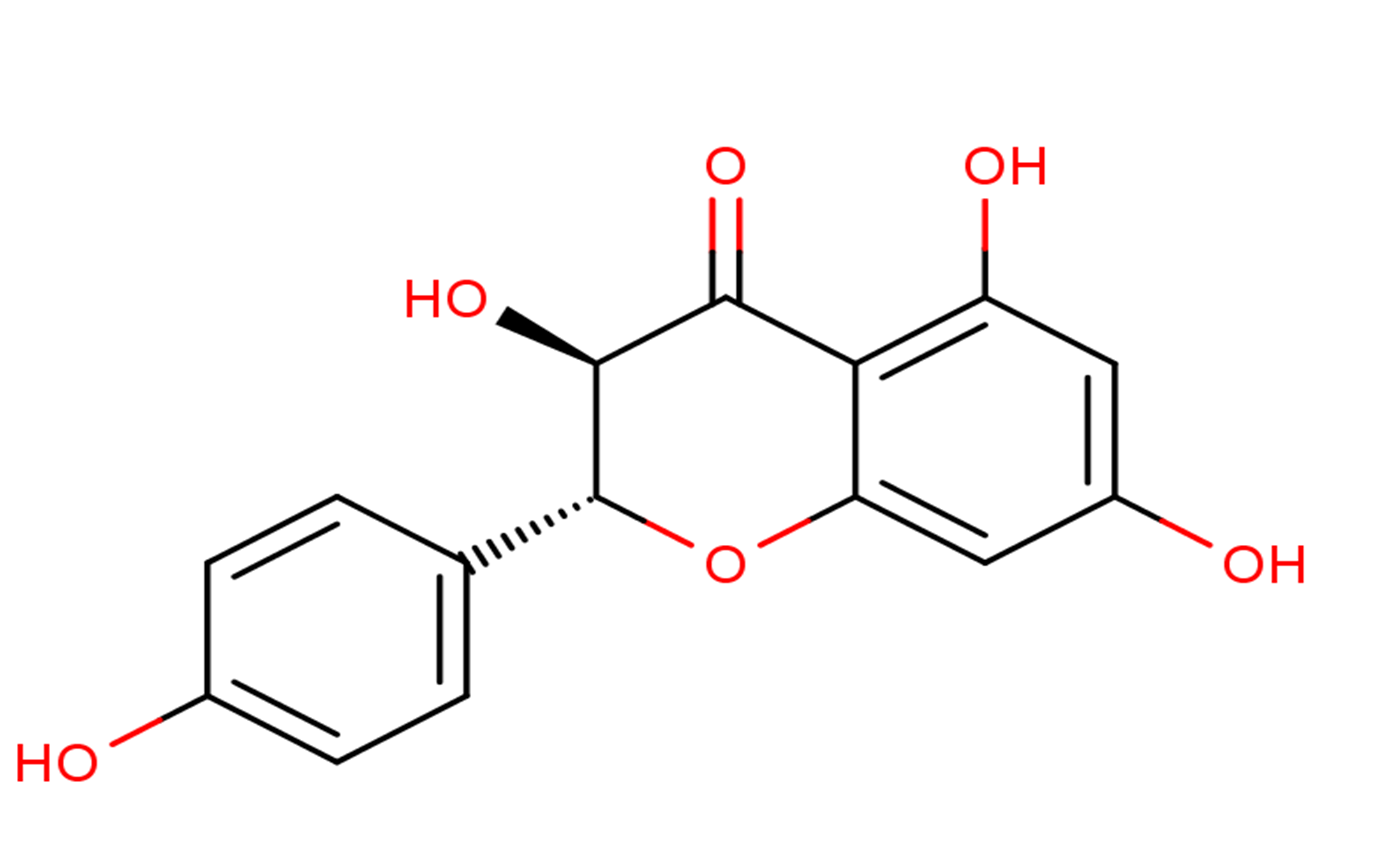
Aromadendrin
CAS No. 480-20-6
Aromadendrin( —— )
Catalog No. M22807 CAS No. 480-20-6
Aromadendrin is a natural product.?It induces apoptosis and inhibits Bcl-2 and Bcl-xL expression,?possesses anti-inflammatory, antioxidant, and anti-diabetic properties, it exhibits anti-inflammatory activityAromadendrin, a flavonol, has been reported to possess a variety of pharmacological activities such as anti-inflammatory, antioxidant, and anti-diabetic properties.?
Purity : >98% (HPLC)
 COA
COA
 Datasheet
Datasheet
 HNMR
HNMR
 HPLC
HPLC
 MSDS
MSDS
 Handing Instructions
Handing Instructions
| Size | Price / USD | Stock | Quantity |
| 5MG | 110 | In Stock |


|
| 10MG | 176 | In Stock |


|
| 25MG | 335 | In Stock |


|
| 50MG | 494 | In Stock |


|
| 100MG | Get Quote | In Stock |


|
| 200MG | Get Quote | In Stock |


|
| 500MG | Get Quote | In Stock |


|
| 1G | Get Quote | In Stock |


|
Biological Information
-
Product NameAromadendrin
-
NoteResearch use only, not for human use.
-
Brief DescriptionAromadendrin is a natural product.?It induces apoptosis and inhibits Bcl-2 and Bcl-xL expression,?possesses anti-inflammatory, antioxidant, and anti-diabetic properties, it exhibits anti-inflammatory activityAromadendrin, a flavonol, has been reported to possess a variety of pharmacological activities such as anti-inflammatory, antioxidant, and anti-diabetic properties.?
-
DescriptionAromadendrin is a natural product.?It induces apoptosis and inhibits Bcl-2 and Bcl-xL expression,?possesses anti-inflammatory, antioxidant, and anti-diabetic properties, it exhibits anti-inflammatory activityAromadendrin, a flavonol, has been reported to possess a variety of pharmacological activities such as anti-inflammatory, antioxidant, and anti-diabetic properties.?Aromadendrin significantly suppressed LPS-induced excessive production of pro-inflammatory mediators such as nitric oxide (NO) and PGE2.?In accordance, aromadendrin attenuated LPSinduced overexpression iNOS and COX-2.?In addition, aromadendrin significantly suppressed LPS-induced degradation of IκB, which sequesters NF-κB in cytoplasm, consequently inhibiting the nuclear translocation of pro-inflammatory transcription factor NF- κB.?Aromadendrin significantly attenuated LPS-induced activation of JNK, but not ERK and p38, in a concentration-dependent manner.?Aromadendrin exhibits anti-inflammatory activity through the suppression of nuclear translocation of NF-κB and phosphorylation of JNK in LPS-stimulated RAW 264.7 macrophage cells.
-
In VitroCell Proliferation Assay Cell Line:Normal synoviocyte cells; RA-FLS cells Concentration:0.3 μM, 3 μM, 30 μM, 300 μM Incubation Time:48 hours Result:Decreased the proliferation of RA-FLSs.Apoptosis Analysis Cell Line:RA-FLS cells Concentration:3 μM, 30 μM Incubation Time:48 hours Result:Induced apoptosis in RA-FLSs.Western Blot Analysis Cell Line:RA-FLS cells Concentration:3 μM, 30 μM Incubation Time:48 hours Result:Promoted Bax and Bad expression, increased the cleaved fragments of caspase-3, caspase-9 and cleaved PARP and inhibited Bcl-2 and Bcl-xL expression.
-
In Vivo——
-
Synonyms——
-
PathwayAngiogenesis
-
TargetBcl-2
-
RecptorBcl-2|Bcl-xL
-
Research Area——
-
Indication——
Chemical Information
-
CAS Number480-20-6
-
Formula Weight288.3
-
Molecular FormulaC15H12O6
-
Purity>98% (HPLC)
-
SolubilityDMSO:120 mg/mL (416.31 mM; Need ultrasonic); H2O:< 0.1 mg/mL (insoluble)
-
SMILESO=C1C2=C(O)C=C(O)C=C2O[C@H](C3=CC=C(O)C=C3)[C@H]1O
-
Chemical Name——
Shipping & Storage Information
-
Storage(-20℃)
-
ShippingWith Ice Pack
-
Stability≥ 2 years
Reference
1. Stimulation of glucose uptake and improvement of insulin resistance by aromadendrin.Pharmacology. 2011;88(5-6):266-74.
molnova catalog



related products
-
BCL6-IN-6
BCL6-IN-6 is an inhibitor of Bcl-6 and can be used in studies about diffuse large B-cell lymphoma. BCL6-IN-6 blocks the interaction of Bcl-6 with its corepressors and dose-dependently reactivates Bcl-6 target genes.
-
S55746
S55746 (BCL201, Servier-1) is a novel potent, selective, orally bioavailable inhibitor of BCL-2 with Ki of 1.3 nM.
-
MI-223
MI-223 (NSC 320223) is a small molecule that specifically binds to Mcl-1 with Kd of 160 nM.



 Cart
Cart
 sales@molnova.com
sales@molnova.com


